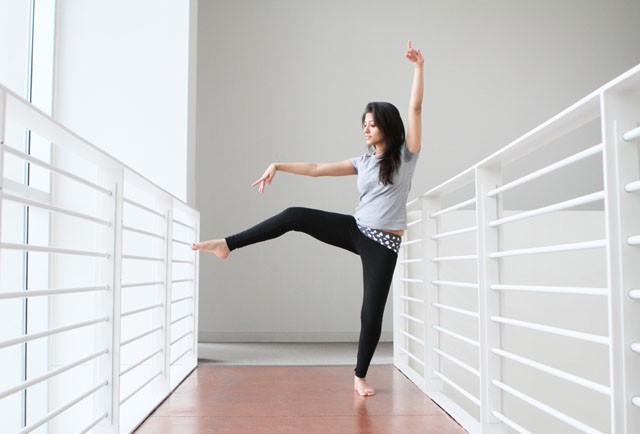When she was five years old, Rashi Gulati won her first dancing award, performing a classical Indian dance and competing against dancers as old as 15. She doesnâÄôt remember that day, but itâÄôs a story her mom loves to tell.
Gulati may be an award-winning dancer in India, but being far from her home in New Delhi, her main focus now is her economics homework.
Vaibhav Vij, GulatiâÄôs dance partner on campus, performs with her in many of the shows. He described Gulati as a creative mind and great dancer.
“It is always a pleasure dancing with friends,” he said, “and she is a friend to everyone.”
Gulati began taking traditional Indian dance classes when she was 4 years old, per her motherâÄôs wishes. She said her mother had been a dancer at heart but never had classical training, so she passed that chance on to her daughter.
Neither of them ever imagined that Gulati would reach the levels of passion and success she has in the past 17 years.
When Gulati was 9, she began taking classes at the Shiamak Davar Institute for the Performing Arts, one of the approximately 200 dance institutes in India owned by the world-renowned dancer and choreographer Shiamak Davar.
There she continued training until she thought she was skilled enough to audition for the special potential batch, a group of the instituteâÄôs 42 best students who receive special training from Davar.
Gulati was one of more than 500 dancers taking class at SDIPA in India when she auditioned for the group at the age of 12.
It took three years of rejection and hard work before she was admitted into the prestigious group and began learning new types of dance for the first time, including jazz, hip-hop, modern, Bollywood and rock âÄònâÄô roll.
Gulati said the key to her success was learning from her mistakes and watching great dancers.
“Just be who you are on stage,” Gulati said. “When I am dancing I donâÄôt think about anything else.”
In 2004, Gulati received the Coca-Cola award, which was only given to three dancers in all of SDIPA. Two years later, Gulati and a group of 400 dancers from around the world performed in Melbourne, Australia at the Commonwealth Games âÄî an Olympics-style competition for British Commonwealth countries.
Meanwhile she was also school choreographer for all the shows and events in her high school, which included interschool dance competitions in street jazz and Bollywood.
Abhimanyu Dahiya, another student from GulatiâÄôs high school, called her “very focused” in everything that she did. Though she lived far from the practice venue, Gulati never missed a dance practice while maintaining her dedication to her schoolwork.
After high school, Gulati couldnâÄôt decide whether she wanted to continue dancing. She was offered an instructor position with SDIPA or the chance to go to college.
“I had to choose between my education and my passion,” she said. “I chose my education but will always keep my passion.”
Gulati still takes every opportunity to perform on campus, but after graduating in the spring, she said she hopes to find a job and remain in Minnesota. If she does return to India, sheâÄôll rejoin the institute and will again assume a life of five or six hours of practice each day.
Her mother, Sarika Gulati, said that Gulati had a knack for rhythm at two years old. After more than 25 certificates, approximately 10 trophies and 19 years of watching her daughter work hard, she said she never expected her daughter to be so successful.








